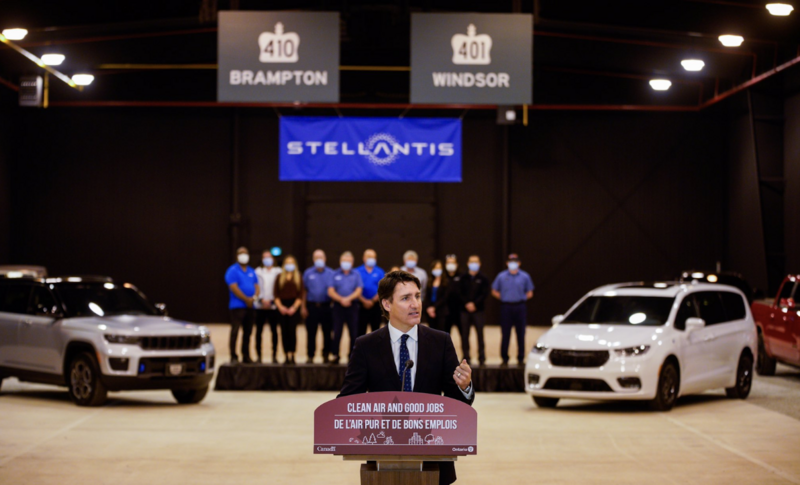Stellantis looked at the subsidies Volkswagen was offered for its Ontario electric vehicle (EV) battery plant—the total could end up hitting $13 billion—and said, “Hold my beer.”
Driving the news: Stellantis and its partner-in-battery-making LG Energy Solution stand to rake in up to $19 billion in subsidies for their EV battery plant in Windsor, Ontario, according to analysis from Johns Hopkins University professor Bentley Allan.
Why it’s happening: The federal government, along with Ontario’s provincial government, lured Stellantis to Windsor with a promise they would match incentives offered by the US Inflation Reduction Act (IRA). That has turned into an expensive commitment.
-
The IRA not only includes subsidies for the cost of building battery plants, but also generous tax credits for the production of the batteries themselves.
- “If you take Stellantis’s public announcements, and you calculate it by the full value of the IRA for cells and modules, you get $19 billion,” Allan told Bloomberg.
Why it matters: Stellantis recently halted all constructions and threatened to relocate its Windsor plant if they don’t get subsidies that match what the IRA offers, effectively forcing Canada to compete with the financial firepower of the US government.
-
That’s a problem for the federal government, whose plan to make Canada a hub for manufacturing EVs (and their batteries) hinges on Volkswagen and Stellantis setting up shop.
Yes, but: $19 billion is a lot of taxpayer money to offer a private business. As the subsidies grow, so does the risk of a political backlash that could undermine support for clean energy investment.
Zoom out: Canada isn’t the only country that’s been put into a bind by the sheer scale of the subsidies offered by the IRA. Stellantis also recently threatened to close its plants in the UK, in part because it can get more generous subsidies in the US.—TS
